The Beltline project in Atlanta has created a spectrum of feelings amongst its citizens. Some have strongly supported the project since its beginning as a simple grassroots initiative based on a Georgia Tech student’s masters thesis; others strongly oppose the project with concerns of gentrification and rising housing costs. However, the intentions of the Beltline are true to Atlanta and its citizens. The Beltline and its creator, Ryan Gravel, aim to create a new sense of connectivity and cultural relationships throughout Atlanta. With 33 miles of bike and walking trails, linking together over 40 Atlanta neighborhoods, connecting 40 new and existing parks, and eventually implementing a new and improved public transit system for Atlanta, the Beltline is the most ambitious and innovative urban design projects in Atlanta’s history. It aims to not only improve the actual layout and design of Atlanta, but to vastly change and improve the social and cultural environment of the city. The Beltline is a project specifically designed to maximize the effects of its built environment: to intentionally, deliberately change lives and encourage community.
So What is the Beltline?
The Atlanta Beltline, according to their website, is “the most comprehensive transportation and economic development effort ever undertaken in the City of Atlanta and among the largest, most wide-ranging urban redevelopment programs currently underway in the United States. The Atlanta BeltLine is a sustainable redevelopment project that will provide a network of public parks, multi-use trails and transit along a historic 22-mile railroad corridor circling downtown and connecting many neighborhoods directly to each other” (Atlanta Beltline). Some people have found this to be a long description of a glorified sidewalk; others have realized the true intentions of the Beltline and strongly support its construction. Neighborhood activists around Atlanta continuously chip in on the effort to expand and fund the Atlanta Beltline. In the beginning of Ryan Gravel’s book “Where We Want to Live”, he details the cultural and social inspirations behind a project like the Beltline. He explains how living in a pedestrian and bike friendly city changes the way people interact and live with one another. I believe these ideas are revolutionary in the genre of urban design and renewal. The transformation of a now outdated and overgrown rail system into an accessible, useful, and modern pedestrian trail meant for thousands of Atlantan citizens should be considered nothing less than innovative.
What has the Beltline Accomplished so Far?
Currently, 11 miles of the proposed 22 are up and running. Several parks have already been connected to the Beltline, such as Perkerson, D.H. Stanton, Boulevard Crossing, and Historic Fourth Ward Parks. Businesses such as those that exist in Krog Street Market and Ponce City Market have been able to prosper thanks to the open access the Beltline provides. Many new restaurants and apartment complexes have begun to pop up along the trail as well. The popularity of the trail can be measured clearly by simply visiting any of the completed trails during a beautiful weekend. The Beltline has effectively initiated urban renewal and reuse so far with the usage of the old railways as well as projects like the Historic Fourth Ward Park which created a storm water basin/recreational park as a dual-use green space.
One of the most popular programs of the Beltline is the of the Art on the Atlanta Beltline initiative. This project serves as Atlanta’s “largest temporary public art exhibition and a testament to the Atlanta BeltLine as a living, breathing entity that is more than just trees, trails, and rails” (Atlanta Beltline). One specific art project aimed not only to contribute to the art on the Beltline, but to contribute to the social community. In her article “Conversations in Clay”, Kira Hegeman describes the project as a place for creating a dynamic art installation and a place for informal art education influenced by conversation and social interaction. One of the primary aims of the project was to “encourage empathic interaction between diverse community members” (Hegeman). Projects like “Conversations in Clay” are creations of the Beltline and the environment it creates. Another example of a community art project was the kickstarter to the Art on the Atlanta Beltline initiative, the Atlanta Lantern Parade, which has grown from 1,200 participants in 2012 to more than 60,000 in 2015. The parade brings people from all over the state to participate and witness the beautiful lights and colors of the lanterns.
What will the Beltline accomplish?
The Beltline’s long term goals are of course to completely finish the trail itself around the entire 22-mile corridor, but also to establish public transit along the trail. There is an act on the November ballot for Fulton County that would better fund all transportation projects in Atlanta, including the Beltline. This funding would go toward clearing out the areas of overgrowth that currently exist on some untouched sections of the Beltline, as well as clearing the path for an eventual transit system. The Beltline also aims to extend and create new parks and green space around Atlanta.
While the parks and the trails are a direct and obvious goal of the construction of the Beltline, another goal to consider, as desired by its creator, Ryan Gravel, is affordable housing along the Beltline. As citizens of Atlanta continue to use the Beltline and prove its worth, housing costs will rise. It is up to Atlanta’s government, citizens, and Beltline participants to effectively establish affordable housing along this multi-use trail. In Gravel’s book, he talked about how pedestrian friendly cities create an environment where people of all different backgrounds and personalities can coexist and interact effortlessly. He wanted the same to occur with the Beltline, but without the extreme efforts of the Beltline officials and possibly government intervention, gentrification will occur, and the Beltline will be mostly excluded to the upper-middle class. This is a problem the Beltline must face as it continues to establish its presence in the city.
What’s the point of the Beltline?
While literally and technically, the Beltline is just a sidewalk, the effects of this project have already proven to be huge in the city, and will continue to grow. Just the simple concept of a connected city has been lost in Atlanta since the ending of the streetcar system. Public transit currently doesn’t exist in Atlanta outside of the tiny loop of downtown that the “Atlanta Streetcar” covers (which is a distance I can easily walk). The Beltline, for someone like me, provides an easy and safe way for me to travel to places I like, such as Ponce City Market, Old Fourth Ward Park, and Krog Street Market. These places are cool to a young person like me, and are not only attractive to people like me, but to the city itself. Atlanta lacks the “feel” and “flavor” that some cities may be described as having. When you think of New York City, Chicago, Los Angeles, Seattle, Austin, or Boston, it’s easy for most people to describe the cities and their personality as places. Atlanta excludes itself from this concept. Urban design projects like the Beltline encourage a personality to finally attach itself to the city.
Not only would the Beltline be good for the city itself, but for its people. I have now walked the Beltline multiple times this semester, and have already felt a better connection to my city. While I know there is much more to Atlanta than the downtown campus of Georgia State and the areas of the Beltline, I believe I have experienced more of the city than many of the people that live here.
Atlanta has significantly less green space than many of the cities like it, and the completed Beltline will increase the amount it has by 40%.
How does the environment of the Beltline inspire more social, cultural, and political connectivity in the city of Atlanta?
Ryan Gravel describes the primary goal of the Beltline project: “To create opportunities for people to lead the kind of lives they want” (Gravel). He also describes how the integration of purpose and meaning into infrastructure is the key to creating a successful built environment. He writes “Beyond aesthetics and this kind of basic functionality, if we let it, the design of infrastructure can also push us further.”
The Atlanta Beltline inspires greater connectivity and quality of life among its citizens. The giant infrastructure will not only improve the environment of the city, but the way we interact with it. It promotes healthy living, creative outlets (such as the various art projects in place along the Beltline), small business growth, community connectivity, and adventure. Citizens that oppose the Beltline project and its growth for issues of gentrification are blaming the wrong thing. The gentrification issue is one that emerges whenever an urban project aiming to improve the quality of life for citizens successfully improves the quality of life (Cummings). Citizens of Atlanta should not so easily condemn such an innovative project for problems that are caused external systems, such as rising housing costs and gentrification. A city with an unfulfilling built environment should not be left the way it is without attempting to improve it. Not only have the topics of gentrification and affordable housing largely contributed to the political conversation, but the Beltline activists that support the project have proven to be a huge political presence in Atlanta. People have fought for more funding and for specific aspects of the project to be completed. On the November 2016 ballot, Fulton county voted for more transportation funding for the city, which included the Beltline. Despite the fact that the project is now a project of the city of Atlanta, its citizens have not given up on having their voices heard regarding how it is created.
The progress the Beltline project so far show so much promise for what started as a simple grassroots initiative by a Georgia Tech architecture student. The goals the project plans to achieve will change the city and the lives of its inhabitants for years to come. Not only is the construction of the project beneficial to the entire makeup of the city, but the social and cultural initiatives a project like this takes may finally add to the “feel” of a city like Atlanta. While people come to see the World of Coke, the Aquarium, the Carter Center, and other sightseer attractions, the Beltline and the innovation it influences (like Krog Street Market and Ponce City Market) might not only attract visitors, but the people that live in Atlanta and want it to be an overall better place to live.
Sources:
Gravel, Ryan. Where We Want to Live: Reclaiming Infrastructure for a New Generation of Cities. New York: St. Martin’s, 2016. Print.
“Atlanta Beltline Overview.” The Atlanta BeltLine. Atlanta Beltline, 2016. Web. Dec. 2016.
Cummings, Alex. “Is the Beltline Bad for Atlanta?” Tropics of Meta. N.p., 19 Dec. 2014. Web. Dec. 2016.
Hegeman, K. (2016). Conversations in clay: Engaging community through a socially engaged public art project. The Journal ofArt for Life. 8(2).


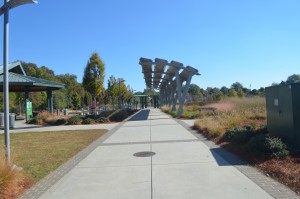
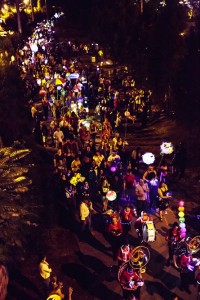
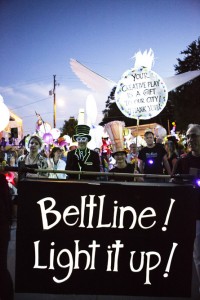
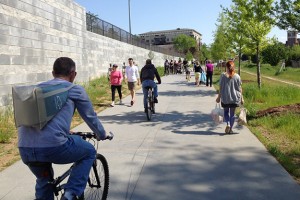

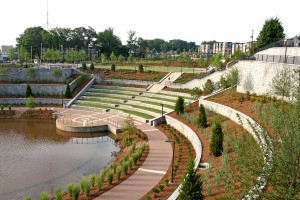

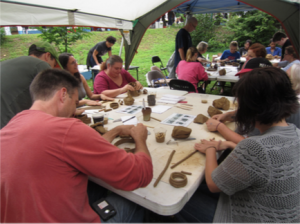
Recent Comments